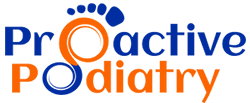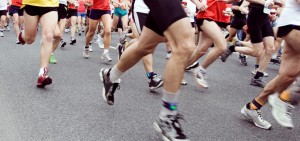Although running technique and styles vary, the heel to toe running style is still considered the norm for most people. The alternative running approach a toe to heel technique, which may in fact be beneficial in reducing injuries.
There are four areas of focus, when looking at some of the differences in running technique. These include body weight and load; muscle contraction, blood flow and tendon function.
So lets start with the more traditional running style…
Running Technique of Heel to Toe
Body Weight and Load:
The heel bone (calcaneus) is the first point of contact. This bone is very solid and must take on the whole weight of the body which is a lot of weight to carry. Therefore this shock is transferred further up in the body (knee, hip and lower back). If the body is not aligned properly over time this repetitive stress can cause joint pain and degeneration.
Muscle Contraction:
After the initial heel contact and absorption of shock the muscles in the leg need to contract to raise the foot up and allow for the next stride. The heels is raised by the calf muscle (gastrocnemius and soleus).
There are two types of muscle contractions, concentric (shortening) and eccentric (lengthening). However when adopting the style of heel to toe running only concentric contraction occurs to shorten the calf muscle and lift the heel.
Blood Flow:
When we are standing, walking or running our vascular system must pump blood back up the body against gravity. This is achieved by muscular contraction of the calf. In this particular style of running the pumping efforts back up the body are reduced. This causes increased pressure on the valves within the veins of our legs, contributing to decreased circulation and warmth in the feet (a very common complaint in runners).
Tendon Function:
The Achilles tendon is one of the strongest and largest tendons in our body’s and plays a big role whilst running. Tendons are able to store energy when stretched through eccentric contraction. With the heel to toe style of running eccentric contraction does not occur therefore the Achilles Tendon is not functioning to its full potential.
Now lets explore the alternative approach..
Running Technique of Toe to Heel
Body Weight and Load:
I want you to image jumping down from a high platform. More than likely your natural instinct would be to try to land on your toes to reduce impact. Now why do you think we land this way? It is probably because we know landing on our heels would cause too much impact to our joints and hurt.
If we also consider foot anatomy the bones in our toes are very small and as we move back into the foot (arch) the bones get longer. This system allows transferring of weight from smaller to larger bones, reducing the impact of body weight.
Now running in comparison to jumping off a high platform is a minor impact, however overtime these micro traumas can result in serious foot pain and lower limb pathology. This is because running places 4-7 times our body weight through our joints. Which is why it is believed to be more beneficial for our joints to run with a toe to heel technique.
Muscle Contraction:
In toe to heel running both forms of eccentric (lengthening) and concentric (shortening) contractions are taking place, as the calf muscle stretches to decelerate the lowering of the heel and then contracts again to lift the foot and repeat the process.
This eccentric contraction to help decelerate the lowering of the heel from toe contact with the ground reduces the overall load on the heel bone and thus further up the body.This technique can also reduce shin splints as the calf takes on more of the work.
The calf muscle is a slow twitch muscle fiber and can cope with longer duration of activity. Our Tibialis Anterior muscle at the front of the leg to lift the forefoot is a fast twitch muscle fiber. Therefore it will fatigue quicker over longer distances, resulting in shin splints.
Blood Flow:
With the two phases of muscle contractions, both eccentric and concentric the body’s ability to pump blood back up the legs is enhanced. Less strain is placed on the valves in our veins, making pumping blood back to the heart easier. This can also decrease lactic acid build up, reducing pain and fatigue in the legs whilst running.
Tendon Function:
When running, similarly to a kangaroo jumping this motion should look easy and efficient with minimal impact observed. This is because the stretching (eccentric contraction) of the Achilles Tendon when jumping allows the storage of this elastic energy to increase power and efficiency.
The tendon acts similarly to a rubber band that stores energy on stretching and utilises this energy on release to “spring back”. This release of energy is very similar to what occurs in the human body within tendons, such as the mentioned Achilles Tendon.
Instead of impact and lift like we discussed in the heel to toe technique the toe to heel style of running becomes energy/deceleration and energy release/lift. During eccentric contraction a tendon is 30 to 40 percent stronger than a concentric muscle contraction. Running therefore, becomes a very smooth and efficient movement.
Now you may be asking yourself the question: “how do i change my running to a heel to toe technique”?
Begin by walking and progressing to jogging backwards while barefoot. This will help you to become familiar with the toe to heel sensation. Then try to forward jog adopting the same technique.
You will instantly feel the load difference in your joints, especially when running on hard surfaces like concrete.
Building up to your regular running pace may take some time and may feel weird to begin with.
Related Topics:
- Shin Splints
- Achilles Injury
- Blisters
- The Right Shoes for Your Foot Type
- Various Types of Running Shoes
- Minimalist Shoes to Lighten Your Load




Leave a Reply